Since 1997, drivers have enjoyed better fuel economy, lower running costs and unrivalled levels of comfort and refinement thanks to Toyota’s hybrid technology. Today, Toyota’s range of hybrid cars encompasses small hybrids like the Toyota Yaris Hybrid, family size cars like the Toyota Prius, Corolla and Toyota C-HR, even estates like the Corolla Hybrid Touring Sports. But have you ever wondered how hybrid cars work?
Read on to discover exactly what Toyota’s hybrid drive system is, how it works and how it benefits the environment and your wallet.
What is a hybrid?
Simply put, a ‘hybrid’ is a vehicle with two or more power sources. Most hybrid road cars use a normal internal combustion engine paired with an electric motor, but the way these work together means that there are several different kinds of hybrid setup.
Beginning with the original Prius, Toyota pioneered the full hybrid system that uses two separate powerplants – a battery-powered electric motor and petrol-driven combustion engine – which can work together to drive the vehicle or can each be used in isolation. It is the most popular hybrid system in the world, and has sold more than 15 million units since the Prius was launched in Japan in August 1997.
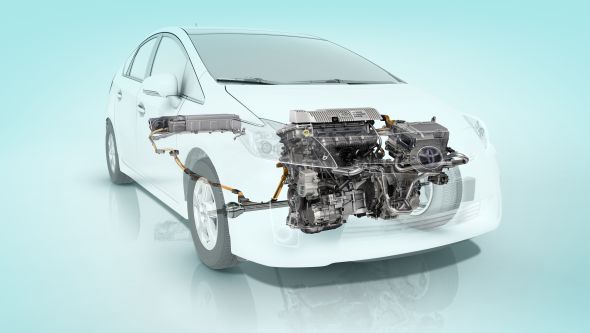
The second kind of hybrid is known as parallel. It uses a normal combustion engine as the main source of power, with an electric motor fitted between the engine and gearbox to provide assistance. This arrangement tends to be more restricted in its function than a full hybrid, and fitting an electric motor into a very small space also limits its power and EV (electric vehicle) range.
Lastly, the third hybrid variation is the series type. In this type of vehicle the electric motor provides all the drive. The normal combustion engine isn’t connected to the transmission, and instead works as a generator to power the electric motor. The main hurdle for a series hybrid is maintaining its efficiency once the battery power has been used up. For this reason, series hybrids are rare.
Toyota hybrid – how does the system work?
Toyota’s hybrid drive system consists of six primary components: petrol engine, electric motor, electric generator, power control unit, and a power split device that uses a special type of gearbox to smoothly distribute power from the engine, motor and generator.
It is a clever, fuel-saving technology that can seamlessly and automatically switch between electric power and conventional engine power. Capable of adapting to different driving conditions, our hybrid system intelligently controls the power coming from both sources and tells the car how to combine them for the greatest efficiency and performance.
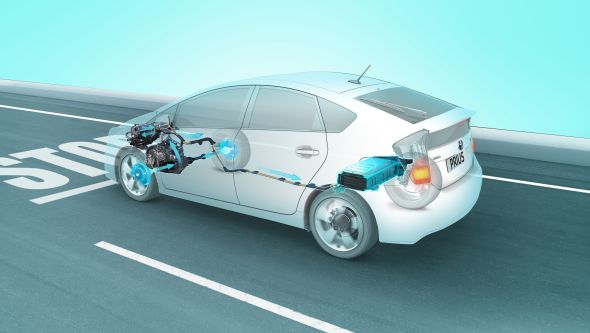
The system delivers true synergy between the two power sources. When the engine is running, it charges the battery via the generator; when driving conditions allow it, such as in slow-moving traffic, the generator can cut out the petrol engine and let the electric motor take over for zero-emissions travelling. The sophisticated engine management system can sense when the car is stopped and will switch off the engine to conserve power and cut emissions, automatically starting up again when needed.
The battery is kept well charged by the system, so a hybrid-powered Toyota won’t need to be plugged into a mains supply to be recharged.
However, Toyota does produce plug-in hybrid electric vehicles for people who can make use of its greater range of more than 30 miles in electric-only EV mode and cars which convert hydrogen into electricity. Read more about the different types of hybrid and electrified vehicle by clicking here.
How are the batteries charged?
Toyota’s hybrid system charges the battery in two ways. Firstly and as already mentioned, the petrol engine drives the generator to charge the battery. The second method is through regenerative braking, a system that puts braking energy to good use.
Every time you put your foot on the brake or lift off the accelerator, the system diverts energy back to the battery where it is, in effect, recycled. Instead of the energy being lost as heat or noise from the brakes, it is captured and then used to power the electric motor later. This is particularly efficient in stop-start traffic where the system recovers and stores a great deal of energy, making the car more efficient overall.
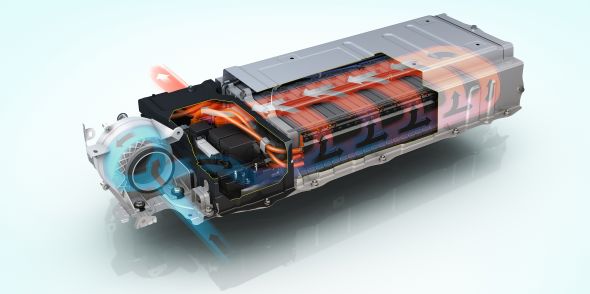
For a PHEV like the Prius Plug-in, the on-board battery can also be charged at home using the mains supply or at dedicated charging points along your journey, allowing the greater EV range of up to 30 miles.
How long do hybrid batteries last?
The batteries in Toyota’s hybrid vehicles are efficient, corrosion-resistant units designed to last, which is why Toyota’s standard battery warranty is five years or 100,000 miles and can be extended up to 15 years with no limit on total mileage – read more about this here.
The batteries are substantial units that have to store sufficient voltage to power the car with no assistance from the petrol engine. It’s true that their production does have a small, additional environmental impact, but this is more than offset by the environmental benefits of driving a hybrid car. In fact, we’ve dispelled that hybrid myth, along with others, in this post.
Toyota is also keen to recycle the batteries from its hybrid cars, which can be remanufactured to make new batteries or repurposed into other forms of stationary energy storage – this can be arranged through your Toyota dealer. We already recover over 90% of hybrid batteries from our vehicles, and are targeting a 100% recovery rate.
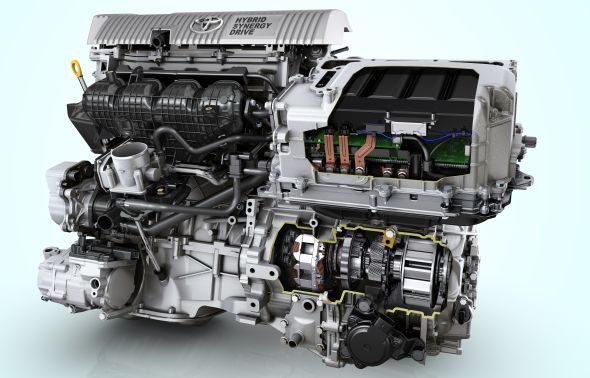
Is the engine different to that of a normal car?
In short, yes. The internal combustion engine used in a Toyota hybrid uses a slightly different engine cycle than the conventional Otto-type four-stroke cycle. Called the Atkinson cycle, this modified four-stroke cycle produces less heat and is therefore more efficient.
By cooling the internal combustion chamber using recirculated exhaust gases, it avoids a problem faced by engines with traditional cycles: injecting more fuel than necessary to reduce combustion temperatures and prevent the catalytic converters from overheating. The traditional remedy works, but uses more fuel in the process. However, Toyota’s solution is more fuel-efficient and is very reliable.
A more in-depth analysis of Toyota’s use of the Atkinson cycle can be read here.
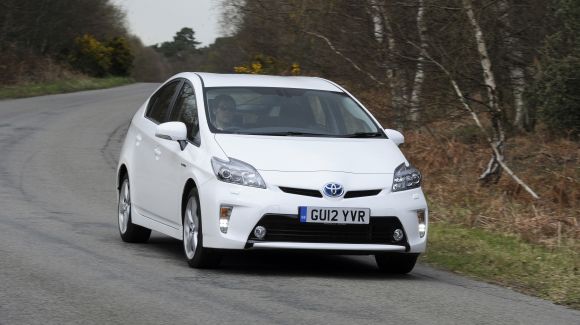
Do I have to drive differently to make the most of hybrid technology?
Not at all. Because Toyota has made the hybrid system fully automatic, it will optimise its operation and minimise fuel use for each driver. You can sit back and enjoy the drive!
You can read more about the experience of driving a Toyota hybrid by reading this article, in which motoring journalist Tim Dickson takes a Corolla Hybrid for a spin.
There are also some general tips, many of which apply to maximising the fuel economy of hybrid and non-hybrid cars alike, at this link.
To find out more about our complete range of hybrid vehicles, click here.
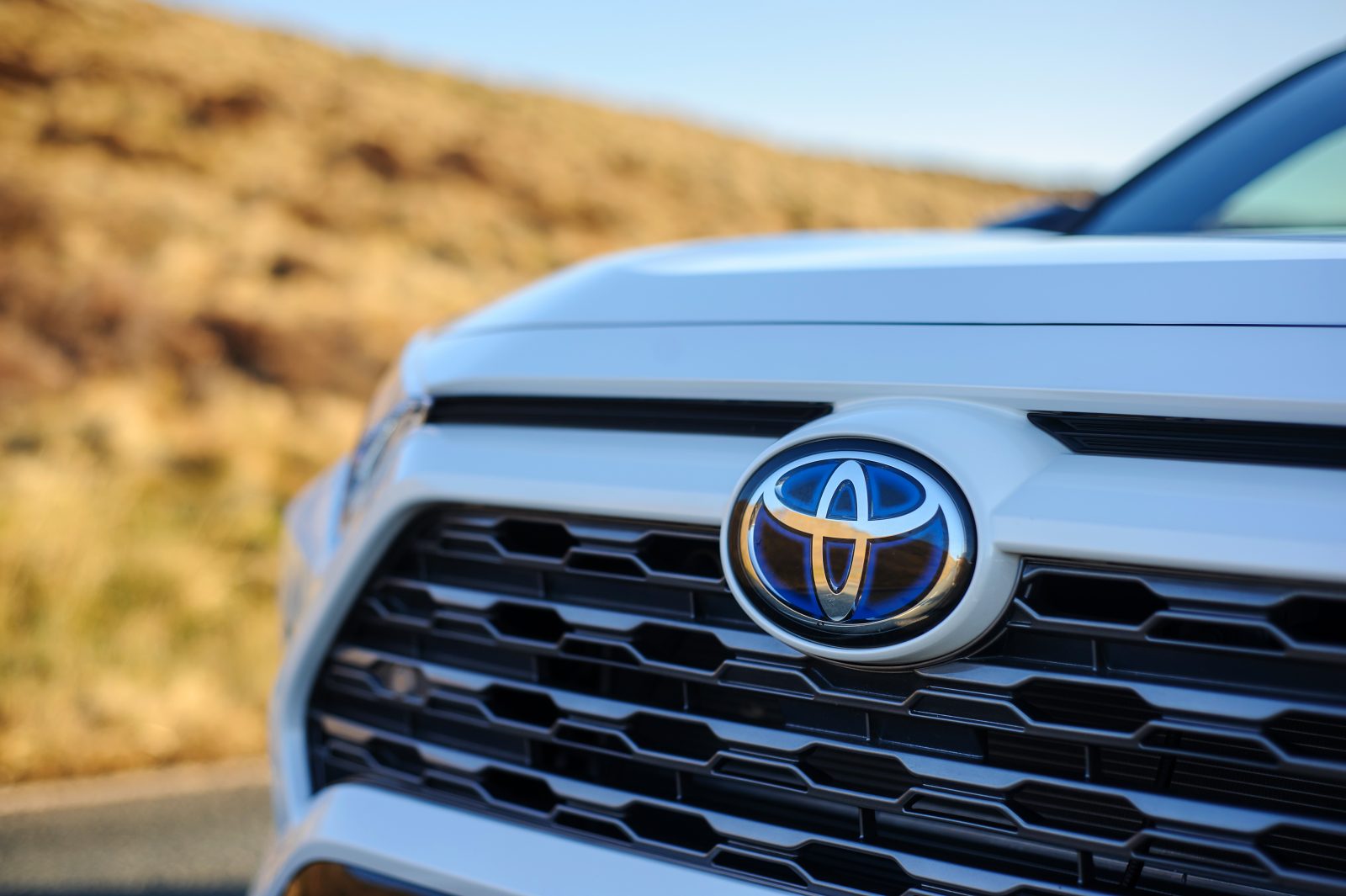
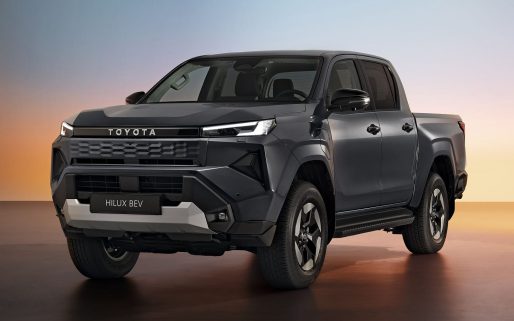
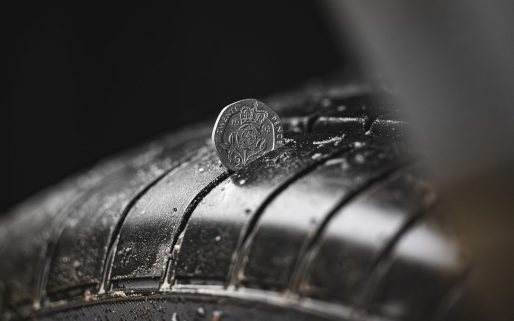

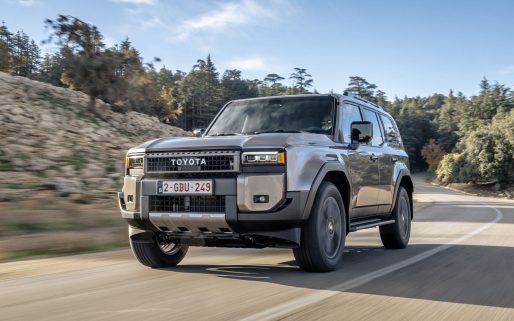
Very interesting! No wonder that my Yaris HSD performs so well
Quote from above blog “a car with Hybrid Synergy Drive will never need to be plugged into a mains supply for recharging” My car has HSD and I have to charge it from the mains – can someone please tell the writer that Toyota now make a Plugin Prius….
Hi Jim,
The blog post is referring to the functionality of HSD, for example in the Prius, which doesn’t need to be plugged in to charge as it charges itself when driving. The Prius Plug-In has the additional acpacity to be plugged in to charge to give up to 15.5 miles of EV driving. However, even if it’s never actually plugged in to charge, the HSD system will work as normal, therefore the statment is true.
Many thanks.
why is the mpg so poor? and so much worse than that advertised?
I’m getting 47mpg on my new Hybrid and am massively disapointed.!
Hi Sioned,
We’re sorry to hear that you’re not pleased with your current MPG figures. The advertised figures, as published by all car manufacturers, are achieved in a controlled environment, as such you may see different results in real-world driving. We have put together a few tips on getting the most out of your hybrid, which you may be interested in seeing, here: http://ow.ly/sddv0. We do hope this helps. If you do think that you’ve got a problem with your car we always recommend visiting your nearest Toyota Dealer as they’ll be able to offer first hand advice.
Many thanks and kind regards.
If you are only getting miles per gallon in the 40’s then it is you driving habit that is at fault. If we don’t pay attention to our foot pressure, we tend to always be in accelerate mode – or worse, panic mode, usually in trying to keep up with people who are driving too fast. A lot of this is ‘illusion’ – we see a car going faster than us and we think we are slowing down, or another car accelerates and we think our car is slowing down. and we press down on the accelerator. It is hard to break the habit, but you can by monitoring the real-time display. It is maddening at first, keeping your foot pressure light, but your speedometer doesn’t lie – you are not really slowing down, and you do not need to accelerate, it is an illusion. When I do not pay attention and drive my ‘normal’ lazy illusion-driven way, I only get high 40’s. When I pay attention to my foot, I’ve reached 65mpg. My overall average is 55mpg. Also at lights, you do not need to accelerate hard, or for as long as you think. True, accelerating on just the battery will drive the driver behind you crazy – it requires very slow acceleration, but you can accelerate a lot slower than you think, and let up on the accelerator much sooner than you realize. Acceleration is the biggest gas guzzler, which is why city driving gives you lower mpg’s if you are mostly accelerating away from lights. Pay attention to your foot and don’t accelerate like a banshee – unless you are fleeing imaginary traffic light hijackers (which is another illusion we tend to have) or engaged in traffic light drag races or highway cross-country races to maintain your social status (yes, more illusions that are mpg killers).
So true its the way you drive the car that gets the best results,
I wouldn’t recommend this car! I think Toyota need to revisit their publicity. Loads of disapointed customers can’t be good for your reputation
I have a 56 plate Prius which I have owned for three and a half years. It is perhaps the best car I have ever owned. Whilst I am nostalgic for many of the cars that I owned and raced in my younger days, by comparison they were noisy, uneconomic, frequently temperamental and had the ability to attract rust.
The Prius, by comparison, is quiet, comfortable and without wishing to be a hostage to fortune, so far utterly reliable. Furthermore since buying it I have kept a detailed record of actual mileage and petrol use and have achieved 52.3mpg. The ten pounds vehicle tax is an added bonus.
I am looking forward to trading up to a used plug-in Prius in about three years time.
Until battery technology improves dramatically the hybrid is the way forward.
Keep up the good work Toyota.
Hi Andrew
Thanks for your post. We appreciate your feedback regarding Prius ownership.
Your experience does mirror feedback we receive, particularly in relation to the quiet drive when running on electric power at lower speed. We know the Prius hybrid system is reliable and it is proven and tested over many millions of miles. Good to hear your thoughts about trading up to a Plug-in in the future. This is essentially the next step in the evolution of hybrid and we feel represents the best of both worlds, combining the benefits of electric and hybrid vehicles but with none of the downsides such as “range anxiety” attached to full EV models.
Here is more information about Plug-in incase this is of use.
Best wishes
not good enough, you still need a combustible engine. i have a better idea, to where there’s no need for natural resources.
what part switch’s one drive to the other and have there been problems with this issue?
Hi Tom
Thanks for your post.
The power split device will switch between the electric motor and the petrol engine. Our full hybrid vehicles are very reliable and we have not had any specific problems with the power split device.
Hope this helps.
What speed is a 2013 prius 200 capable of reaching on a flat surface? Cecil
Hello Cecil
Thanks for your post and for your interest in Prius.
We mighty need a bit of help as you mention Prius 200. In the UK market we just sell the Prius and this has a top speed of 112 mph. If however you are referring to a different version in a different market then let us know and we will do our best to find out for you.
Hope this helps.
Hi, I live in the French alps. I love the car, but my Yaris rarely let the battery pack loose more than two bars when I go back up home. Those two bars, I have them back mid way on my way down to the valley and after I still have to do lots of breaking and all this potential energy is likely lost. For daily commute, wouldn’t it be great if the computer/hybrid system learned to optimize fuel consumption not on a standard fashion but truly to take full advantage of the topography and daily commute? If this is not yet possible, can I have my Yaris tuned so that it allows to loose 4 bars that I could easily replenished on the way down?
Thanks